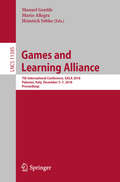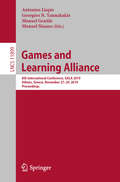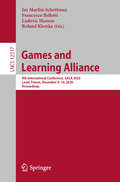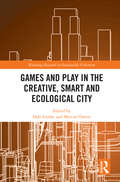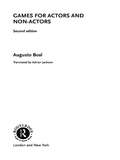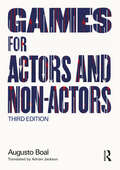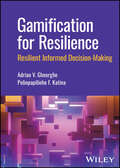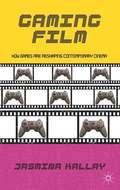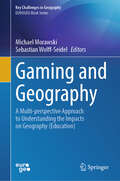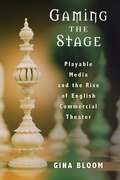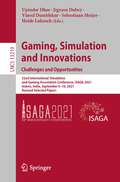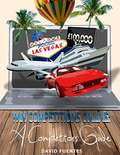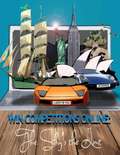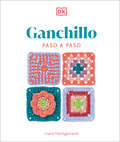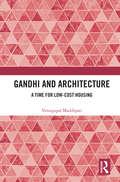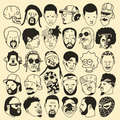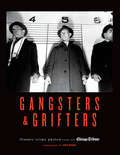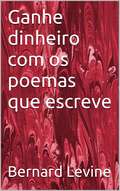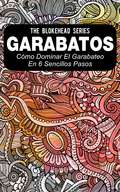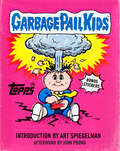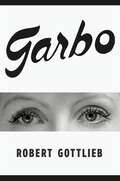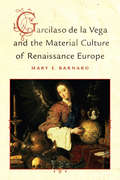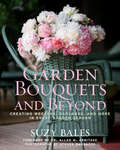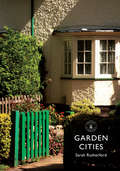- Table View
- List View
Games and Learning Alliance: 7th International Conference, GALA 2018, Palermo, Italy, December 5–7, 2018, Proceedings (Lecture Notes in Computer Science #11385)
by Manuel Gentile Mario Allegra Heinrich SöbkeThis book constitutes the refereed proceedings of the 7th International Conference on Games and Learning Alliance, GALA 2018, held in Palermo, Italy, in December 2018.The 38 revised regular papers presented together with 9 poster papers were carefully reviewed and selected from 68 submissions. The papers cover the following topics: games for skills training; game design; methods and tools; gamification and innovative game approaches.
Games and Learning Alliance: 8th International Conference, GALA 2019, Athens, Greece, November 27–29, 2019, Proceedings (Lecture Notes in Computer Science #11899)
by Georgios N. Yannakakis Antonios Liapis Manuel Gentile Manuel NinausThis book constitutes the refereed proceedings of the 8th International Conference on Games and Learning Alliance, GALA 2019, held in Athens, Greece, in November 2019. The 38 regular papers presented together with 19 poster papers were carefully reviewed and selected from 76 submissions. The papers cover the following topics: serious game design and pedagogical foundations; AI and technology for SG; gamification; applications and case studies; and posters.The chapter "Cyber Chronix, Participatory Research Approach to Develop and Evaluate a Storytelling Game on Personal Data Protection Rights and Privacy Risks" is available open access under a CC BY 4.0 license at link.springer.com.
Games and Learning Alliance: 9th International Conference, GALA 2020, Laval, France, December 9–10, 2020, Proceedings (Lecture Notes in Computer Science #12517)
by Iza Marfisi-Schottman Francesco Bellotti Ludovic Hamon Roland KlemkeThis book constitutes the refereed proceedings of the 9th International Conference on Games and Learning Alliance, GALA 2020, held in Laval, France, in December 2020. The 35 full papers and 10 short papers were carefully reviewed and selected from 77 submissions. The papers cover a broad spectrum of topics: Serious Game Design; Serious Game Analytics; Virtual and Mixed Reality Applications; Gamification Theory; Gamification Applications; Serious Games for Instruction; and Serious Game Applications and Studies.
Games and Play in the Creative, Smart and Ecological City (Routledge Research in Sustainable Urbanism)
by Dale Leorke Marcus OwensThis book explores what games and play can tell us about contemporary processes of urbanization and examines how the dynamics of gaming can help us understand the interurban competition that underpins the entrepreneurialism of the smart and creative city. Game and Play in the Creative, Smart and Ecological City is a collection of chapters written by an interdisciplinary group of scholars from game studies, media studies, play studies, architecture, landscape architecture and urban planning. It situates the historical evolution of play and games in the urban landscape and outlines the scope of the various ways games and play contribute to the city’s economy, cultural life and environmental concerns. In connecting games and play more concretely to urban discourses and design strategies, this book urges scholars to consider their growing contribution to three overarching sets of discourses that dominate urban planning and policy today: the creative and cultural economies of cities; the smart and playable city; and ecological cities. This interdisciplinary work will be of great interest to students and scholars of game studies, play studies, landscape architecture (and allied design fields), urban geography, and art history.
Games for Actors and Non-Actors
by Augusto BoalGames for Actors and Non-Actors is the classic and best selling book by the founder of Theatre of the Oppressed, Augusto Boal. It sets out the principles and practice of Boal's revolutionary Method, showing how theatre can be used to transform and liberate everyone – actors and non-actors alike! This thoroughly updated and substantially revised second edition includes: two new essays by Boal on major recent projects in Brazil Boal's description of his work with the Royal Shakespeare Company a revised introduction and translator's preface a collection of photographs taken during Boal's workshops, commissioned for this edition new reflections on Forum Theatre.
Games for Actors and Non-Actors (Augusto Boal)
by Augusto BoalGames for Actors and Non-Actors is the classic and bestselling book by the founder of Theatre of the Oppressed, Augusto Boal. It sets out the principles and practice of Boal’s revolutionary method, showing how theatre can be used to transform and liberate everyone – actors and non-actors alike! This new third English edition includes recently uncovered interviews and essays from the 1970s, some of which featured in the earliest Portuguese edition of this book, and a new essay by the theatre director Sergio de Carvalho, which looks at Boal’s work in the context of Brazilian theatre and politics over the past fifty years. This is a vital handbook for theatre makers and activists of all kinds who want to deepen their understanding of the theory and practice of Boal’s Theatre of the Oppressed. It is also an excellent introduction for those new to the system.
Gamification for Resilience: Resilient Informed Decision Making
by Adrian V. Gheorghe Polinpapilinho F. KatinaGamification for Resilience Enable resilience informed decision-making with an insightful combination of systems engineering concepts In Gamification for Resilience: Resilient Informed Decision-Making, a team of distinguished researchers deliver an insightful and exciting integration of game theory, design, and applications that explains how to create a resilient city that promotes sustainable development, well-being, and inclusive growth. The authors combine several concepts and techniques taken from serious gaming and integrate them into decision-making theory, demonstrating how to enable Resilience Informed Decision-Making. The book addresses critical infrastructure systems and how to ensure these systems are supported against manmade, natural threats and hazards. It includes thought-provoking research questions and case applications that will engage and challenge readers and create an active and memorable learning experience. Readers will also find: A thorough introduction to systems theory as the basis for bridging science and the practice of engineering systems Comprehensive explorations of gamification and its application to the resilience informed decision-making process Practical discussions of the analysis and assessment of risk and vulnerability via serious gaming Fulsome treatments of the representation of system complexity using object-oriented programming Perfect for professionals and researchers working in the areas of decision making, gamification, resilience, risk assessments, and critical infrastructures, Gamification for Resilience: Resilient Informed Decision-Making will also benefit undergraduate and graduate students studying urban planning, smart cities, and related subjects.
Gaming Film: How Games Are Reshaping Contemporary Cinema
by Jasmina KallayGaming Film explores the growing influence of computer games on contemporary cinema. From the type of stories told to their complex structural patterns, from the changing modes of reception to innovative visual aesthetics, computer games are re-shaping the cinematic landscape in exciting directions.
Gaming and Geography: A Multi-perspective Approach to Understanding the Impacts on Geography (Education) (Key Challenges in Geography)
by Michael Morawski Sebastian Wolff-SeidelThis book explores the uncharted territory where gaming and geography intersect in "Gaming and Geography (Education)." This book bridges the gap between video games and geography, delving into the constructivist creative processes of game development, gameplay, and critical reflections on video games' role in geographical discourses. Through a multi-perspective lens, the book examines how video games can facilitate the exploration of geographic questions and act as catalysts for critical discourses. Scholars shed light on the geographies presented in video games, including their representations, spatial images, and policies. By viewing video games as cultural and critical geography practices, the authors enrich the political, socio-cultural, and critical geographies associated with this medium. A key argument of the book is that video games can foster systemic competence and networked thinking, particularly in addressing complex socio-ecological challenges like climate change and migration. In contrast to traditional geography classes, digital games provide valuable simulations of complex systems, enhancing students' understanding and skills. The book also explores other possibilities such as digital field trips and language support to enhance the educational experience. "Gaming and Geography (Education)" offers a compelling narrative that highlights the diverse roles video games can play in geographic education. By exploring the intersection of gaming and geography, this book deepens our understanding of this dynamic relationship and its impact on critical geographies within the realm of video games.
Gaming the Stage: Playable Media and the Rise of English Commercial Theater (Theater: Theory/Text/Performance)
by Gina BloomRich connections between gaming and theater stretch back to the 16th and 17th centuries, when England's first commercial theaters appeared right next door to gaming houses and blood-sport arenas. In the first book-length exploration of gaming in the early modern period, Gina Bloom shows that theaters succeeded in London's new entertainment marketplace largely because watching a play and playing a game were similar experiences. Audiences did not just see a play; they were encouraged to play the play, and knowledge of gaming helped them become better theatergoers. Examining dramas written for these theaters alongside evidence of analog games popular then and today, Bloom argues for games as theatrical media and theater as an interactive gaming technology. Gaming the Stage also introduces a new archive for game studies: scenes of onstage gaming, which appear at climactic moments in dramatic literature. Bloom reveals plays to be systems of information for theater spectators: games of withholding, divulging, speculating, and wagering on knowledge. Her book breaks new ground through examinations of plays such as The Tempest, Arden of Faversham, A Woman Killed with Kindness, and A Game at Chess; the histories of familiar games such as cards, backgammon, and chess; less familiar ones, like Game of the Goose; and even a mixed-reality theater videogame.
Gaming, Simulation and Innovations: 52nd International Simulation and Gaming Association Conference, ISAGA 2021, Indore, India, September 6–10, 2021, Revised Selected Papers (Lecture Notes in Computer Science #13219)
by Sebastiaan Meijer Vinod Dumblekar Heide Lukosch Upinder Dhar Jigyasu DubeyThis book constitutes the refereed proceedings of the 52nd International Simulation and Gaming Association Conference, ISAGA 2021, held in Indore, India, during September 6–10, 2021. The 24 full papers included in this book were carefully reviewed and selected from 58 submissions. They were organized in topical sections as follows: game design and facilitation; gaming in education; player experience in simulations; and policy formulation and serious games.
Gana competiciones en línea: una guía para promotores
by David Fuentes¡Bienvenido al mundo de la comping en línea! Este libro es el compañero ideal para cualquiera que esté comenzando en el marketing promocional. Te brindará una completa visión informativa e intuitiva acerca del mundo de las promociones en línea y te ayudará a ejecutar tus propias exitosas campañas . Este es el tercer libro de la serie "Gana competencia en línea" que se centra en ti, el promotor. Ahora, habrá incluidos algunos consejos sobre la competencia, y aunque después de todo es un libro de compilación, es aquí donde tu, el promotor, estarás en el centro del escenario. Ganar un nuevo negocio sobre sus competidores o simplemente ganar más exposición para tu marca y tu compañía; vamos a ponerte yy prepararte de la mejor forma pósible. No es necesario que seas un experto en marketing o un fanatico de las relaciones públicas para llegar a entender mis libros. Están hechos en un español sencillo y directo, sin jergas y contiene una completa información inteligente; Ahora tu serás el afortunado promotor tuyo para continúar con tu campaña ... Con esta Edición hecha en el Reino Unido puedes: • Aprender lo que se necesita saber para convertirte en un promotor de primera clase. • Establecer promociones usando las redes sociales. • Trabajar al máximo en publicidad ... ¡Y mucho, mucho más! Facebook.com/wincompetitionsonline Twitter.com/wincompsonline Wincompetitionsonline.com Autor: David Fuentes Diseño de portada: Thomas Phipps
Ganar Competiciones en Línea: El Cielo es el Límite
by David FuentesBienvenido a mi segundo libro en la serie "Ganar Competiciones en Línea", una continuación bienvenida de "Ganar Competiciones en Línea: Una Guía para los Competidores". Este libro está repleto de aún más consejos y sugerencias para los principiantes. Me he expandido en el mismo formato, dividiendo la necesidad de conocer la información en trozos más grandes pero no menos jugosos, simplemente esperando que le metas los dientes.
Ganchillo paso a paso (Crochet Stitches Step-by-Step)
by Claire MontgomerieEncuentra la inspiración en este manual de ganchillo con más de 150 puntos explicados paso a paso.Con un diseño moderno e innovador, Ganchillo paso a paso es el libro ideal para tejedores de todas las edades. Lleva a cabo tus mejores creaciones siguiendo útiles consejos y prueba técnicas que aportarán algo nuevo a tus proyectos.En su interior, encontrarás:Más de 150 puntos y técnicas imprescindibles acompañados de fotografías llamativas y claras instrucciones paso a paso.Un capítulo introductorio que explica todas las herramientas, materiales y técnicas necesarias para que obtengas los mejores resultados en tus labores de ganchillo.Una galería de fotografías con cada uno de los puntadas de ganchillo que aparecen en el libro que te ayudará a encontrar la que necesitas a simple vista y a dirigirte fácilmente a la página correspondiente.¡Descubre un amplio abanico de puntos de crochet y lleva tus habilidades a otro nivel con esta práctica guía tanto para principiantes como para expertos del ganchillo! Crea con ella increíbles objetos, prendas o accesorios para tu hogar, desde mantas y jerseys hasta calcetines y juguetes. ¡El regalo perfecto para cualquier crocheter!-------------------------------------------------An inspirational, practical guide to more than 150 crochet stitches. Take your crochet to the next level with Crochet Stitches Step by Step. This essential guide opens up possibilities for crocheters of all abilities, with many stitches to inspire your next project. Discover how to combine stitches to create eye-catching creations, and try your hand at techniques, including filet stitches and C2C.Crochet Stitches Step-by-Step features:More than 150 essential crochet stitches, with each process step fully photographed and annotated.Clean, fresh layouts with contemporary colorways are used in the stitch photography to appeal to a wide range of readers.An introductory chapter covering all the essential tools, materials, and techniques to provide readers with the best results for their crochet.A gallery chapter showcasing all of the stitches at a glance, so readers can easily find the type or style of crochet they need – or be tempted to try something new.With an at-a-glance gallery to help you find the perfect stitch for your next project, this modern classic is a must-have for crocheters of all ages and abilities. This essential collection of must-try stitches will offer something for every crocheter and every project, with tips on finding the proper techniques to create everything from blankets and sweaters to socks and toys.
Gandhi and Architecture: A Time for Low-Cost Housing
by Venugopal MaddipatiGandhi and Architecture: A Time for Low-Cost Housing chronicles the emergence of a low-cost, low-rise housing architecture that conforms to M.K. Gandhi’s religious need to establish finite boundaries for everyday actions; finitude in turn defines Gandhi’s conservative and exclusionary conception of religion. Drawing from rich archival and field materials, the book begins with an exploration of Gandhi’s religiosity of relinquishment and the British Spiritualist, Madeline Slade’s creation of his low-cost hut, Adi Niwas, in the village of Segaon in the 1930s. Adi Niwas inaugurates a low-cost housing architecture of finitude founded on the near-simultaneous but heterogeneous, conservative Gandhian ideals of pursuing self-sacrifice and rendering the pursuit of self-sacrifice legible as the practice of an exclusionary varnashramadharma. At a considerable remove from Gandhi’s religious conservatism, successive generations in post-colonial India have reimagined a secular necessity for this Gandhian low-cost housing architecture of finitude. In the early 1950s era of mass housing for post-partition refugees from Pakistan, the making of a low-cost housing architecture was premised on the necessity of responding to economic concerns and to an emerging demographic mandate. In the 1970s, during the Organization of Petroleum Exporting Countries crisis, it was premised on the rise of urban and climatological necessities. More recently, in the late 1990s and early 2000s, its reception has been premised on the emergence of language-based identitarianism in Wardha, Maharashtra. Each of these moments of necessity reveals the enduring present of a Gandhian low-cost housing architecture of finitude and also the need to emancipate Gandhian finitude from Gandhi’s own exclusions. This volume is a critical intervention in the philosophy of architectural history. Drawing eclectically from science and technology studies, political science, housing studies, urban studies, religious studies, and anthropology, this richly illustrated volume will be of great interest to students and researchers of architecture and design, housing, history, sociology, economics, Gandhian studies, urban studies and development studies.
Gang Busters: The Crime Fighters of American Broadcasting
by Martin GramsFrom 1935 to 1958, GANG BUSTERS established a reputation for presenting authentic case histories from the files of law enforcement, re-enactments of the criminal underworld including "Baby-Face" Nelson, Ma Barker and her boys, John Dillinger, and Willie "The Actor" Sutton. Thrilling escapades such as the Alcatraz Prison Riot and million dollar bank robberies were the subject of GANG BUSTERS broadcasts. Colonel H. Norman Schwarzkopf (father of the same Gulf-War Schwarzkopf) and New York's Lewis J. Valentine were two of the many weekly hosts who introduced each broadcast. GANG BUSTERS was the first radio program to feature weekly "clues" describing convicts at large, assailants wanted by the Federal Bureau of Investigation, and listeners paid close attention to the details, which gave local law enforcement an edge in the apprehension of more than 300 criminals during the program's 20-year run. GANG BUSTERS also expanded into a television series, two big- screen movies, a matinee serial and a lengthy series of comic books. This book features a documentary about the GANG BUSTERS program, covering every aspect of the series including background production, lawsuits from listeners, a biography about Phillips H. Lord, the creator of the series, and a complete episode guide for each and every radio and television broadcast.
Gangster Doodles
by Marlon SassyA collectible, four-color illustrated A–Z treasury of gangster rappers, the hip-hop high-life, and notorious pop culture history, told through a series of graphic doodles on 3” x 3” sticky notes.Four years ago, a Post-it® note changed Marlon Sassy’s life. Using office supplies “borrowed” from his admin job, Sassy began creating colorful sketches of rappers in highlighter, Sharpie, and pen. He made his debut posting his rendition of Snoop on Tumblr under the pseudonym “Gangster Doodles.” Next was Bart Simpson and Biggie, then Yams and Yeezy. Soon, he had amassed a cult following of fans who clamored for his next artistic interpretation.Gangster Doodles brings together more than 400 of his most popular illustrations with thirty never-before-seen pieces. An impressive and comprehensive A–Z compendium, it features everyone from Black Jesus to Beyoncé, Kendrick Lamar to LeBron James, Jean-Michel Basquiat to Young Thug, and Kermit the Frog to Action Bronson. This is the ultimate gift for rap fanatics and pop culture addicts alike.
Gangsters & Grifters: Classic Crime Photos from the Chicago Tribune
by Chicago TribuneA collection of some never-before-published vintage photos that &“exposes Chicago&’s underbelly . . . an era full of guns, gore and gangsters&” (WGLT.org). Created from the Chicago Tribune's vast archives, Gangsters and Grifters is a collection of photographs featuring infamous criminals, small-time bandits, hoodlums, and more at shocking crime scenes. These vintage glass-plate and acetate negatives were taken from the early 1900s through the 1950s, and they have been largely unseen for generations. That is because most have never been published, only having been witnessed by the photographers and police in the moments after an arrest, crime, or even murder. Included are graphic crime scenes, raw evidence, and depictions of searing emotions, captured on film during a time when photographers were given unprecedented access alongside police. Some photographs resemble film noir movie stills. Some are cartoonish. All feature real people, real drama, and real crimes. Accompanying information about each is included wherever possible, often with archived news stories. Gangsters & Grifters is a powerful, visually stunning look back into the dark story of Chicago&’s nefarious crime underworld. These fascinating, surprising, and entrancing photos reveal still-unsolved murder mysteries and portraits of notorious gang overlords like John Dillinger and Al Capone. This is a must-have for photography buffs, history lovers, and anyone curious about the seedy underbelly of early twentieth-century Chicago.
Ganhe dinheiro com os poemas que escreve
by Bernard Levine Flavia MachadoVocê escreve poesias? Agora você pode ganhar dinheiro com os poemas que escreve e publicá-los em cartões comemorativos, calendários, posters e placas para paredes. Caso você queira realizar o sonho de se tornar escritor e ganhar dinheiro com poesia, este livro é exclusivo e foi feito especialmente para você. Escrever poesia para ganhar dinheiro é super divertido e muito lucrativo! Ganhe dinheiro fazendo o que ama.
Garabatos: Cómo dominar el garabateo en 6 sencillos pasos
by The Blokehead¿Qué es el garabateo? Antes de intentar aprender a garabatear es preciso aprender qué significa realmente este término. El origen de la palabra «garabato» es incierto. La actual edición del diccionario de la RAE señala que esta palabra es de origen prerromano, y otras fuentes nos indican que sus primeras acepciones fueron las de «punzón» o «garfio». La acepción moderna de la palabra «garabato» que usamos comúnmente hoy en día (refiriéndonos a dibujos pequeños que hacemos distraídamente mientras pensamos), aparece ya en textos de finales del siglo XVI, y figura en el diccionario de Covarrubias de 1611. Dejando todo el tema histórico de lado, podemos decir que un garabato no es más que un dibujo que se hace de manera distraída o inconsciente, normalmente cuando se tiene la atención puesta en cualquier otra cosa. Es por esto precisamente por lo que los garabatos suelen encontrarse en los márgenes de los cuadernos o en notas adhesivas en el trabajo: la gente que se encuentra anclada a un sitio obligada a escuchar una llamada telefónica, prestar atención en una clase, etc., cogerán un bolígrafo y comenzarán distraídamente a hacer dibujos pequeños. Estos dibujos son lo que llamamos garabatos. Cómo garabatear No hay una manera correcta o incorrecta de garabatear, al igual que no hay una manera correcta o incorrecta de dibujar. Para garabatear se podría usar un bloc de dibujo blanco inmaculado, pero también los márgenes de un cuaderno o un taco de hojas adhesivas. Se puede usar un lápiz del número dos, un bolígrafo o cualquier material de dibujo que se desee; mientras se tenga un medio, es posible garabatear. Cuando llega el momento de comenzar con los garabatos, es importante dejar que los pensamientos fluyan y concentrarse en cualquier idea creativa que se te ocurra. Quizá veas una letra A enorme en el membrete de una de tus hojas y decidas dibujar enredaderas trepando a ella en esp
Garbage Pail Kids (Topps)
by The Topps CompanyA collection of all 206 colorfully over-the-top images from the first five series of the popular collectible stickers from the 1980s.Garbage Pail Kids—a series of collectible stickers produced by Topps in the 1980s—combined spectacular artwork and over-the-top satire. The result was an inspired collaboration between avant-garde cartoonists and humorists including Art Spiegelman, Mark Newgarden, John Pound, Tom Bunk, and Jay Lynch. A new generation of fans continues to embrace this pop-culture phenomenon as Garbage Pail Kids stickers are still being published. Now, for the first time, all 206 rare and hard-to-find images from Series 1 through 5 are collected, along with a special set of four limited-edition, previously unreleased bonus stickers. This exciting follow up to Wacky Packages is guaranteed to appeal to die-hard collectors as well as a new generation of fans.Praise for Garbage Pail Kids“If you ask me, reliving my time with Bad Breath Seth and Potty Scotty is worth the cover price alone.” —USAToday.com“A wonderfully designed tribute to these shit-disturbing cards in all their graphic, full-color glory.” —ComicsBeat.com “There’s a lot of interesting stuff in Spiegel man’s intro, and in the afterward by John Pound, the artist who originated and drew the bulk of the Kids. But the real reason to buy this book is for the graphic brilliance of the art itself.” —Boston Phoenix
Garbo
by Robert GottliebA New York Times Book Review Editors' Choice | One of Literary Hub's most anticipated books of 2021Award-winning master critic Robert Gottlieb takes a singular and multifaceted look at the life of silver screen legend Greta Garbo, and the culture that worshiped her.“Wherever you look in the period between 1925 and 1941,” Robert Gottlieb writes in Garbo, “Greta Garbo is in people’s minds, hearts, and dreams.” Strikingly glamorous and famously inscrutable, she managed, in sixteen short years, to infiltrate the world’s subconscious; the end of her film career, when she was thirty-six, only made her more irresistible. Garbo appeared in just twenty-four Hollywood movies, yet her impact on the world—and that indescribable, transcendent presence she possessed—was rivaled only by Marilyn Monroe’s. She was looked on as a unique phenomenon, a sphinx, a myth, the most beautiful woman in the world, but in reality she was a Swedish peasant girl, uneducated, naïve, and always on her guard. When she arrived in Hollywood, aged nineteen, she spoke barely a word of English and was completely unprepared for the ferocious publicity that quickly adhered to her as, almost overnight, she became the world’s most famous actress.In Garbo, the acclaimed critic and editor Robert Gottlieb offers a vivid and thorough retelling of her life, beginning in the slums of Stockholm and proceeding through her years of struggling to elude the attention of the world—her desperate, futile striving to be “left alone.” He takes us through the films themselves, from M-G-M’s early presentation of her as a “vamp”—her overwhelming beauty drawing men to their doom, a formula she loathed—to the artistic heights of Camille and Ninotchka (“Garbo Laughs!”), by way of Anna Christie (“Garbo Talks!”), Mata Hari, and Grand Hotel. He examines her passive withdrawal from the movies, and the endless attempts to draw her back. And he sketches the life she led as a very wealthy woman in New York—“a hermit about town”—and the life she led in Europe among the Rothschilds and men like Onassis and Churchill. Her relationships with her famous co-star John Gilbert, with Cecil Beaton, with Leopold Stokowski, with Erich Maria Remarque, with George Schlee—were they consummated? Was she bisexual? Was she sexual at all? The whole world wanted to know—and still wants to know.In addition to offering his rich account of her life, Gottlieb, in what he calls “A Garbo Reader,” brings together a remarkable assembly of glimpses of Garbo from other people’s memoirs and interviews, ranging from Ingmar Bergman and Tallulah Bankhead to Roland Barthes; from literature (she turns up everywhere—in Hemingway’s For Whom the Bell Tolls, in Evelyn Waugh, Graham Greene, and the letters of Marianne Moore and Alice B. Toklas); from countless songs and cartoons and articles of merchandise. Most extraordinary of all are the pictures—250 or so ravishing movie stills, formal portraits, and revealing snapshots—all reproduced here in superb duotone. She had no personal vanity, no interest in clothes and make-up, yet the story of Garbo is essentially the story of a face and the camera. Forty years after her career ended, she was still being tormented by unrelenting paparazzi wherever she went.Includes Black-and-White Photographs
Garcilaso de la Vega and the Material Culture of Renaissance Europe
by Mary E BarnardGarcilaso de la Vega and the Material Culture of Renaissance Europe examines the role of cultural objects in the lyric poetry of Garcilaso de la Vega, the premier poet of sixteenth-century Spain. As a pioneer of the "new poetry" of Renaissance Europe, aligned with the court, empire, and modernity, Garcilaso was fully attuned to the collection and circulation of luxury artefacts and other worldly goods. In his poems, a variety of objects, including tapestries, paintings, statues, urns, mirrors, and relics participate in lyric acts of discovery and self-revelation, reveal memory as contingent and unstable, expose knowledge of the self as deceptive, and show how history intersects with the ideology of empire.Mary E. Barnard's study argues persuasively that the material culture of early sixteenth-century Europe embedded within Garcilaso's poems offers a key to understanding the interplay between objects and texts that make those works such vibrant inventions.
Garden Bouquets and Beyond: Creating Wreaths, Garlands, and More in Every Garden Season
by Suzy Bales<p>Suzy Bales sums up garden arrangements like this: "Life is best lived in sync with the seasons." She brings a new angle to four-season garden bouquets—gather the blooms, but don't overlook the leaves, branches, and vines you find in the off-season. <p>Her fresh-from-the-garden arrangements celebrate the ever-changing landscape and feature unique combinations of flowers and foliage for floral creations in every style.Lifelong gardener and lifestyle writer Bales also takes on the role as inspirational designer to educate gardeners about the latest research on conditioning individual garden flowers, how to care for them immediately after cutting, and the length of time they can be expected to last. <p>Garden Bouquets and Beyond: Creating Wreaths, Garlands, and More in Every Garden Season has compiled complete instructions for prolonging the bloom.
Garden Cities
by Sarah RutherfordGarden Cities: the phrase is redolent of Arts and Crafts values and nineteenth-century utopianism. But despite being the culmination of a range of influential movements, and having global influence themselves, in fact there were only ever two true, self-contained Garden Cities in England - far more numerous were Garden Suburbs and Villages. Crystallised in England by social visionary Ebenezer Howard and executed in many cases by planners and architects Barry Parker and Raymond Unwin, the concept arose from nineteenth-century industrial settlements like Port Sunlight (and, earlier, Saltaire and Akroyden), and also from the City Beautiful movement in the US. The settlements were designed to promote healthy and comfortable individual and community life, as well as supporting commerce and industry, and were - and are - instantly and attractively recognisable. This book is a beautifully illustrated guide to the movement as a whole, from its earliest influences through practical difficulties in implementation to the continuing vitality of the communities which are its legacy.
